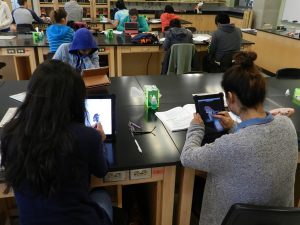 The best operational definition of “good teaching and learning” is expressed in the classic essay “Seven Principles for Good Practice in Undergraduate Education” by Chickering and Gamson (1987).
The best operational definition of “good teaching and learning” is expressed in the classic essay “Seven Principles for Good Practice in Undergraduate Education” by Chickering and Gamson (1987).
These principles were developed following 50 years of research on how teachers teach and students learn. They are designed to improve teaching and learning.
The following outlines various information and data points to demonstrate how the principles are implemented at Montgomery College (MC).
Principle 1: Encourage contact between students and faculty
Frequent communication between students and faculty is essential to maintaining student motivation and engagement. These connections between students and faculty lead to greater retention and improved student success.
Principle 2: Develop reciprocity and cooperation among students
Good learning is not an isolated event; it is collaborative, meaningful, and social.
Principle 3: Use active learning techniques
Students must talk about what they are learning and how it relates to their own experiences; they must be able to connect it to their lived experiences.
This video describes Active Learning by Students. Over the last 4 decades, theory, practice, and research continue to affirm that college students learn best when they are actively involved in the learning process, rather than being passive recipients of information. In this video, Chickering and Gamson’s Principle Three: Active Learning by Students, is interpreted and adapted for good 21st-Century and Post-Pandemic college teaching.
Principle 4: Give prompt feedback
Good teaching means providing students with an assessment of their work and opportunities to make improvements.
Principle 5: Emphasize time on task
Students need help in understanding time management; how that time allocation is defined by faculty can be the basis for high performance for both faculty and students.
Principle 6: Communicate high expectations
Good teaching requires faculty to expect more from their students. As a result, students will give more.
Principle 7: Respect diverse talents and ways of learning
No two people learn the same way, so faculty must differentiate instruction to meet the needs of all students.
MC continues to place emphasis on Universal Design. Under the Academic Affairs umbrella, this focus on accessibility through the Universal Design Center offers insight into how faculty can remove students’ barriers to improving learning.
References:
Chickering, A. W., & Gamson, Z. F. (1987). Seven principles for good practice in undergraduate education. AAHE Bulletin, 3, 7.
